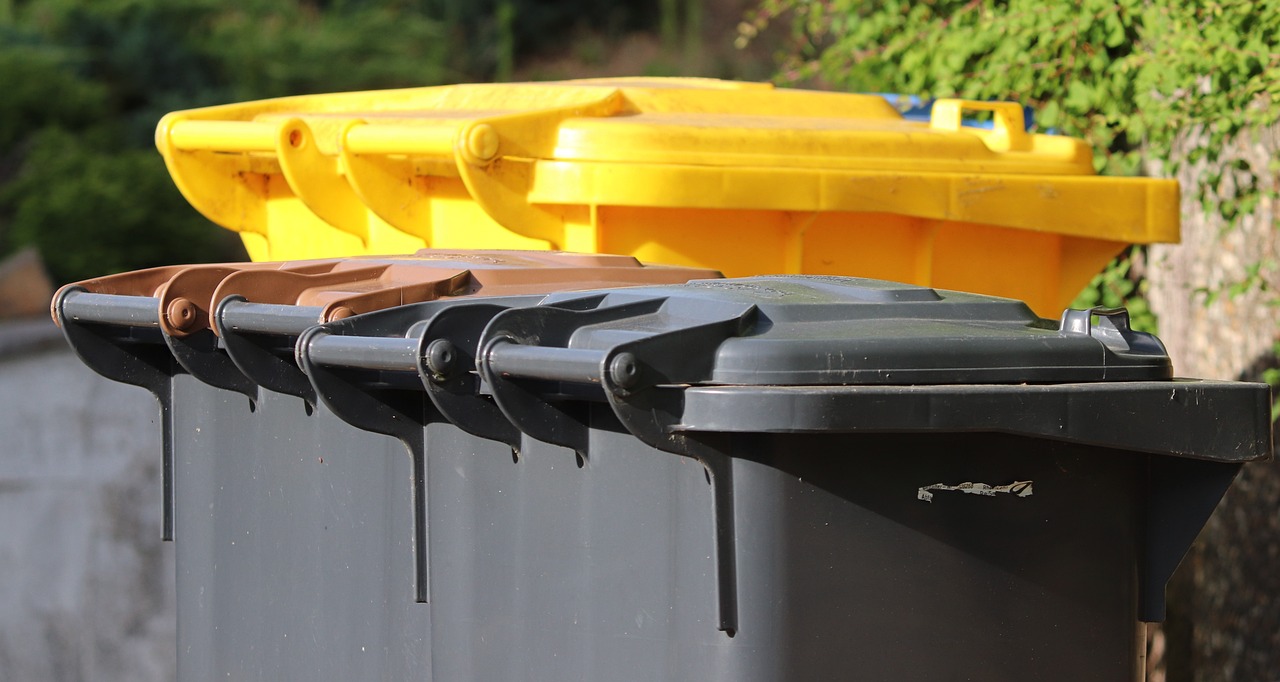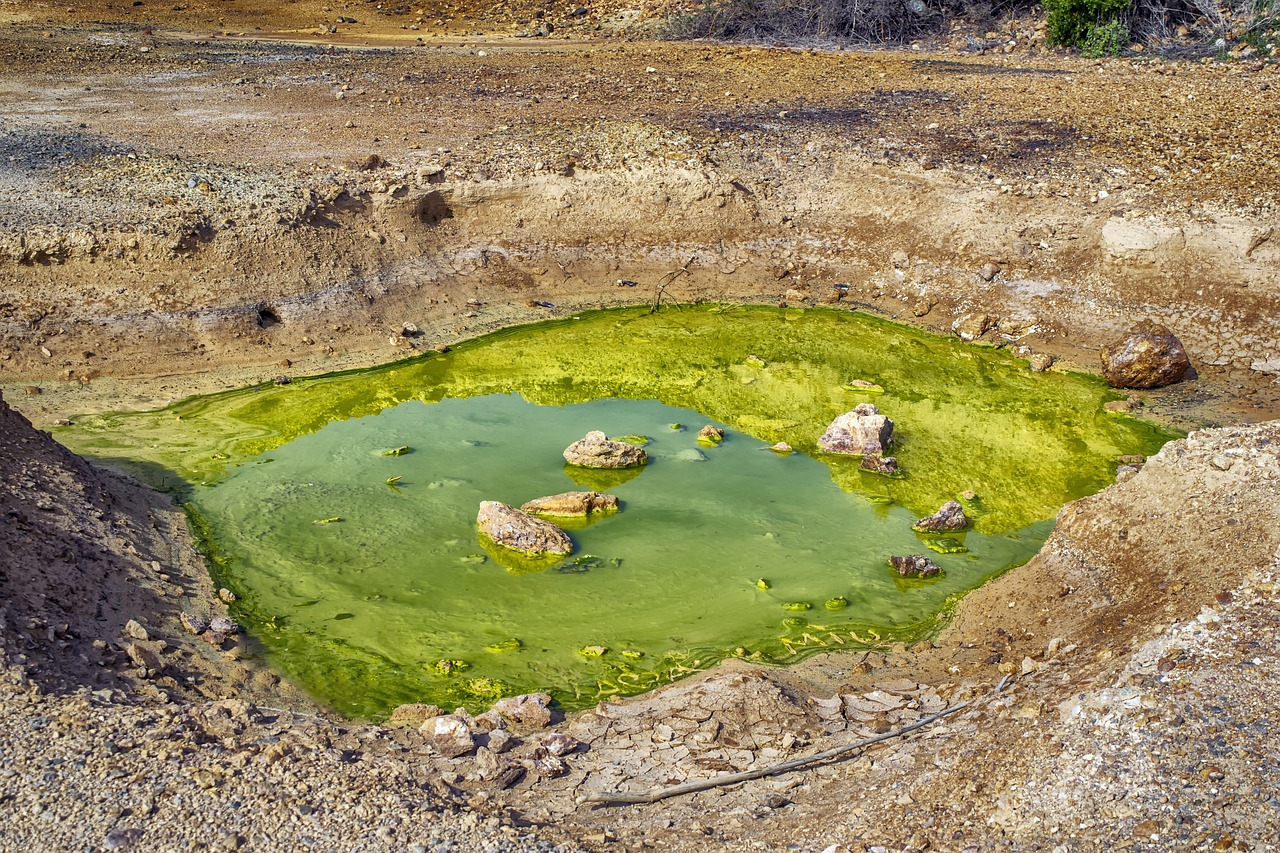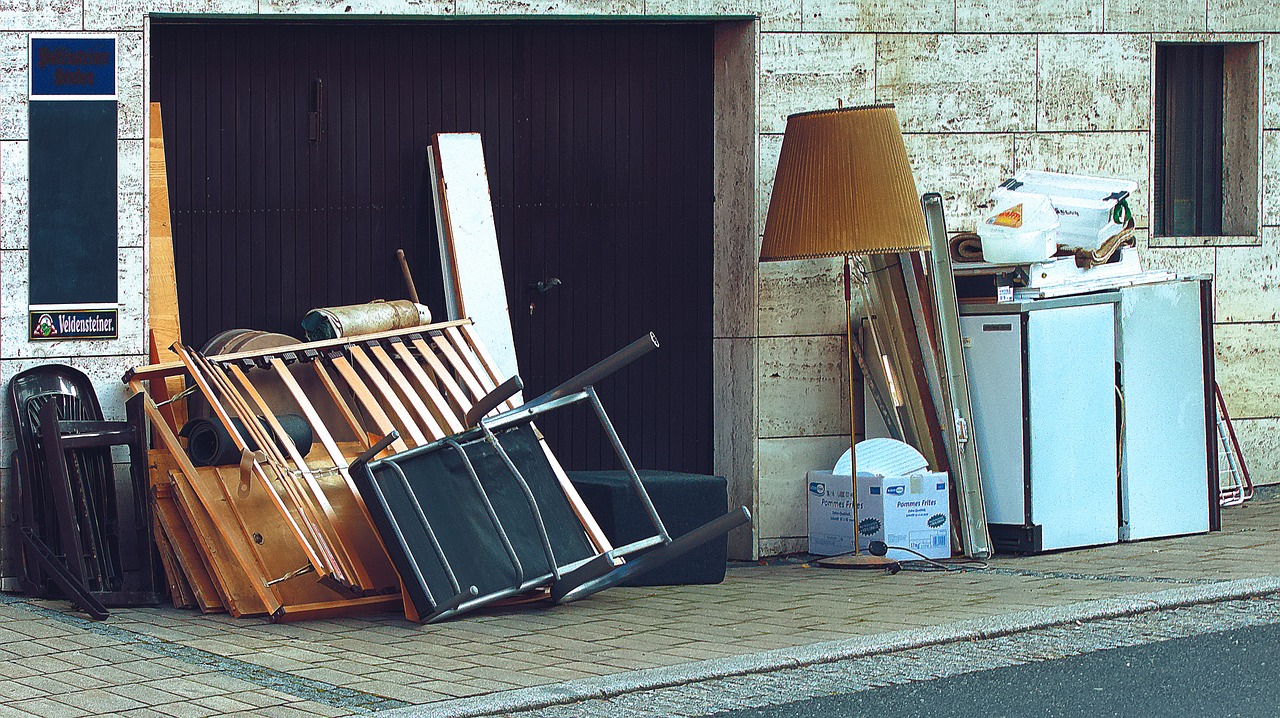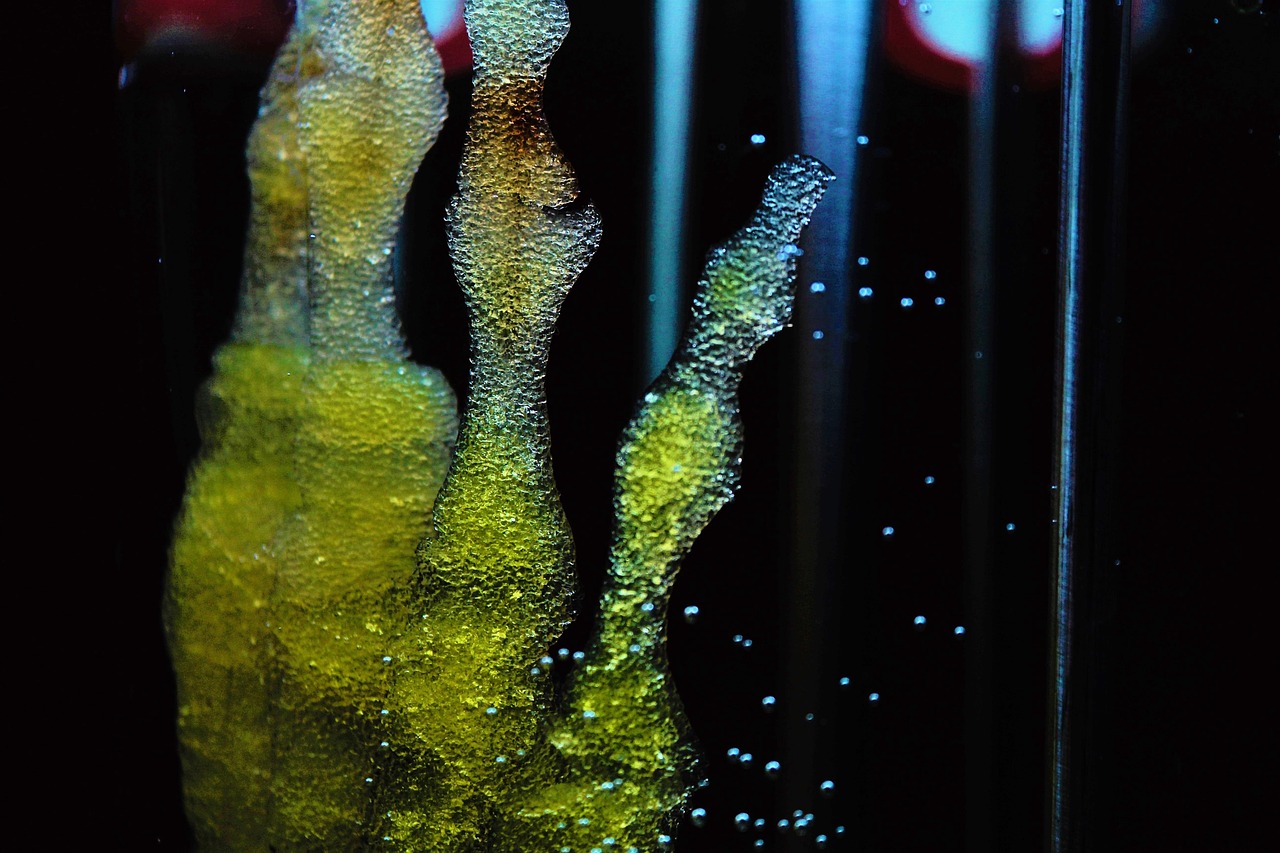Understanding the Break Down of Waste in Landfills
Have you ever wondered what really happens to your trash after it’s thrown away? It’s easy to think that once we toss something in the bin, it disappears forever. However, the reality is much more complex. In landfills, waste undergoes a series of fascinating processes that can take years, if not decades, to fully break down. Understanding the breakdown of waste in landfills is crucial for grasping how we manage our waste and its environmental implications. This article will take you on a journey through the intricate world of waste decomposition, exploring the factors that influence how quickly or slowly this occurs.
To start, let’s consider the composition of landfill waste. Landfills are not just a dumping ground for everyday trash; they are a complex mixture of materials. From organic matter like food scraps and yard waste to inorganic items such as plastics and metals, each component behaves differently in terms of decomposition. For instance, organic materials can break down relatively quickly, while plastics can take hundreds of years to decompose. This variance significantly affects the efficiency of waste management systems and highlights the importance of understanding what we are disposing of.
Now, let’s dive into the factors influencing decomposition rates. Several elements come into play when it comes to how fast waste breaks down in a landfill. Temperature, moisture, and oxygen levels are critical factors that can either enhance or inhibit microbial activity, which is essential for decomposition. For example, warmer temperatures can speed up microbial processes, while too much moisture can lead to anaerobic conditions, slowing down decomposition. Understanding these factors is vital for optimizing landfill operations and reducing the environmental impact of waste.
Interestingly, decomposition can occur in two main ways: anaerobic and aerobic. Anaerobic decomposition happens in the absence of oxygen and leads to the production of methane, a potent greenhouse gas. On the other hand, aerobic decomposition occurs with oxygen present, resulting in carbon dioxide and water. Each process has its unique implications for landfill management and environmental health. It’s crucial to consider how we can manage these processes to minimize harmful emissions and maximize waste breakdown efficiency.
Speaking of decomposition, let’s not forget the role of microorganisms. These tiny organisms are the unsung heroes of waste breakdown. They play a pivotal role in breaking down organic waste, making it essential to understand which microorganisms are involved and how they function. From bacteria to fungi, each type of microorganism has its specialty, helping to decompose different kinds of waste. By fostering a healthy microbial community in landfills, we can significantly enhance the decomposition process.
Moreover, the impact of waste composition on decomposition cannot be overstated. The type of waste we generate directly affects how quickly it breaks down. Organic materials, like food waste, are generally more biodegradable and are broken down faster than inorganic materials, such as metals and plastics, which can persist in the environment for much longer. Understanding this relationship is vital for developing effective waste management strategies that prioritize reducing the amount of non-biodegradable waste we produce.
Lastly, we must address the environmental impacts of landfill waste. The breakdown of waste in landfills has significant consequences, particularly in terms of greenhouse gas emissions. Methane, produced during anaerobic decomposition, is a powerful greenhouse gas that contributes to climate change. Additionally, leachate, a toxic liquid byproduct of waste decomposition, can contaminate groundwater if not properly managed. These environmental concerns highlight the importance of effective waste management practices and the need for innovative solutions to minimize our landfill footprint.
- What types of waste decompose the fastest in landfills? Organic materials, such as food scraps and yard waste, typically decompose much faster than inorganic materials like plastics and metals.
- How does temperature affect waste decomposition? Higher temperatures can accelerate microbial activity, leading to faster decomposition rates, while lower temperatures can slow down the process.
- What are the environmental impacts of landfill waste? Landfill waste can produce greenhouse gases, such as methane, and leachate that can contaminate groundwater, posing risks to public health and the environment.
- Can we improve waste breakdown in landfills? Yes, by managing factors like moisture and oxygen levels and fostering beneficial microorganisms, we can enhance the breakdown processes in landfills.

The Composition of Landfill Waste
Understanding what materials make up landfill waste is crucial for analyzing breakdown processes. When we toss something into the trash, we often don't think about where it goes or what happens next. However, the composition of landfill waste is incredibly diverse and impacts how effectively waste can be managed. The major components typically found in landfills can be categorized into several groups:
- Organic Waste: This includes food scraps, yard waste, and other biodegradable materials. Organic waste is notorious for decomposing relatively quickly compared to other materials.
- Inorganic Waste: Items such as plastics, metals, and glass fall into this category. These materials can take years, if not centuries, to break down, posing significant challenges for waste management.
- Hazardous Waste: This consists of chemicals, batteries, and other toxic substances that require special handling and disposal methods to prevent environmental contamination.
The breakdown rates of these materials vary significantly. For instance, organic waste can decompose within a few weeks to months under ideal conditions, thanks to the activity of microorganisms. In contrast, plastics might linger for hundreds of years, creating long-term environmental issues. This disparity highlights the importance of separating waste at the source and understanding what goes into our landfills.
Moreover, the composition of landfill waste can be influenced by various factors, including local regulations, community recycling programs, and consumer habits. In regions with robust recycling initiatives, the percentage of organic and inorganic waste tends to be lower because materials are diverted from landfills. In contrast, communities that lack such programs may see a higher volume of mixed waste, complicating the breakdown process.
To illustrate the typical composition of landfill waste, consider the following table:
| Waste Type | Percentage of Total Waste |
|---|---|
| Organic Waste | 30% - 40% |
| Inorganic Waste | 20% - 30% |
| Hazardous Waste | 5% - 10% |
| Construction & Demolition Debris | 10% - 15% |
| Other | 10% - 15% |
As we can see, the waste composition is not just a random assortment of discarded items; it reflects our consumption patterns and societal behaviors. By understanding this composition, we can better strategize on how to manage waste effectively and promote sustainability. Ultimately, recognizing the materials we contribute to landfills empowers us to make more informed choices about waste reduction, recycling, and composting.

Factors Influencing Decomposition Rates
When it comes to the breakdown of waste in landfills, several critical factors come into play that can significantly affect how quickly and efficiently this process occurs. Understanding these factors is essential not just for waste management professionals, but for anyone concerned about the environmental impact of waste. So, what are these factors? Let's dive in!
Firstly, temperature is a major player in the decomposition game. In general, warmer temperatures tend to accelerate microbial activity, which in turn speeds up the breakdown of organic materials. Think of it like baking cookies; the hotter the oven, the quicker they cook! In landfills, temperatures can vary widely based on depth, moisture content, and even seasonal changes, leading to inconsistent decomposition rates.
Next up is moisture. Just like we need water to survive, microorganisms require moisture to thrive. If a landfill is too dry, microbial activity slows down, leading to prolonged decomposition times. Conversely, too much moisture can create anaerobic conditions, which can also hinder effective breakdown. It's a delicate balance, much like watering a plant—too little and it wilts, too much and it drowns.
Another significant factor is the oxygen level present in the landfill. Oxygen is crucial for aerobic decomposition, which is a process that produces carbon dioxide and organic matter as byproducts. In contrast, anaerobic decomposition occurs in the absence of oxygen, producing methane—a potent greenhouse gas. The presence or absence of oxygen can drastically change not only the decomposition rate but also the environmental impact of the waste. This leads us to consider how the landfill is designed and managed, as these elements can either promote aerobic conditions or trap gases.
In addition to these primary factors, the composition of the waste itself also plays a vital role. Different materials decompose at different rates; for instance, food scraps break down much faster than plastics or metals. This variability can create a complex ecosystem within the landfill, where some materials decompose quickly, while others linger for decades. For instance, organic matter might decompose within a few months, while glass can remain intact for thousands of years!
To summarize, the decomposition rates in landfills are influenced by:
- Temperature: Warmer conditions speed up microbial activity.
- Moisture: Essential for microbial survival; needs to be balanced.
- Oxygen levels: Determines whether aerobic or anaerobic decomposition occurs.
- Waste composition: Different materials decompose at different rates.
Understanding these factors not only helps in managing landfills more effectively but also sheds light on the broader implications for our environment. By optimizing conditions for decomposition, we can minimize harmful emissions and make waste management more sustainable.

Anaerobic vs. Aerobic Decomposition
When it comes to understanding how waste breaks down in landfills, one of the most fascinating aspects is the difference between anaerobic and aerobic decomposition. These two processes are like two sides of the same coin, each playing a crucial role in the overall breakdown of organic materials. So, what exactly sets them apart? Let's dive in!
Aerobic decomposition occurs in the presence of oxygen. Think of it as a lively party where microorganisms thrive, munching away at organic waste and converting it into simpler substances. This process is typically faster and results in the production of carbon dioxide, water, and heat. The microorganisms involved—such as bacteria and fungi—require oxygen to survive and flourish, making this method efficient for breaking down materials like food scraps and yard waste.
On the flip side, anaerobic decomposition happens in environments where oxygen is scarce or absent. Imagine a dark, quiet room where things are slowly breaking down without much fuss. In this scenario, microorganisms break down waste without oxygen, leading to a much slower process. The byproducts of anaerobic decomposition include methane—a potent greenhouse gas—and other organic acids. While this method is less efficient than aerobic decomposition, it is essential in landfills where the compacted waste limits oxygen flow.
To illustrate the differences in these two processes, consider the following comparison:
| Feature | Aerobic Decomposition | Anaerobic Decomposition |
|---|---|---|
| Oxygen Requirement | Requires oxygen | No oxygen present |
| Speed of Process | Faster breakdown | Slower breakdown |
| Main Byproducts | Carbon dioxide and water | Methane and organic acids |
| Microorganisms Involved | Bacteria and fungi | Specialized anaerobic bacteria |
Both processes have significant implications for waste management. For instance, understanding the balance between aerobic and anaerobic conditions can help landfill operators optimize decomposition rates, reduce greenhouse gas emissions, and improve overall waste management strategies. So, whether it's a bustling aerobic environment or a calm anaerobic one, both play pivotal roles in the natural recycling of waste.
As we continue to explore waste management solutions, recognizing the strengths and weaknesses of each decomposition method will be essential. This knowledge not only aids in effective landfill management but also paves the way for innovative approaches that harness both processes for a more sustainable future.
- What is the main difference between anaerobic and aerobic decomposition?
Aerobic decomposition requires oxygen and is faster, while anaerobic decomposition occurs without oxygen and is slower. - Why is anaerobic decomposition important in landfills?
It helps break down waste in conditions where oxygen is limited and produces methane, which can be captured for energy. - Can both processes occur simultaneously?
Yes, depending on the conditions in the landfill, both aerobic and anaerobic processes can occur at the same time.

The Role of Microorganisms
Microorganisms are the unsung heroes of the decomposition process in landfills. These tiny organisms, which include bacteria, fungi, and protozoa, play a vital role in breaking down organic waste into simpler compounds. Without them, our landfills would be overflowing with waste for years, if not decades. Just imagine a world where trash piles up endlessly—it's a scenario we definitely want to avoid!
When organic materials like food scraps and yard waste are tossed into a landfill, they become a feast for these microorganisms. The process of decomposition begins as these microorganisms consume the organic matter, breaking it down through various biochemical processes. This is where things get interesting: the type of microorganism involved can significantly influence the rate and efficiency of decomposition.
There are two primary types of decomposition processes that microorganisms facilitate: anaerobic and aerobic decomposition. In anaerobic conditions, where oxygen is scarce, certain bacteria thrive and produce methane as a byproduct. Conversely, in aerobic conditions, where oxygen is plentiful, other bacteria and fungi break down waste, resulting in carbon dioxide and water. Each process has its unique implications for landfill management and environmental impact.
To illustrate the diversity of microorganisms involved in decomposition, consider the following table:
| Type of Microorganism | Role in Decomposition | Byproducts |
|---|---|---|
| Bacteria | Break down organic matter; essential for both aerobic and anaerobic processes | Methane (anaerobic), Carbon Dioxide (aerobic) |
| Fungi | Decompose complex organic materials like cellulose and lignin | Carbon Dioxide, Water |
| Protozoa | Consume bacteria and organic matter, helping to regulate microbial populations | Various nutrients that enrich the soil |
In addition to breaking down waste, microorganisms also play a crucial role in nutrient cycling. As they decompose organic materials, they release essential nutrients back into the environment, which can then be utilized by plants and other organisms. This natural recycling process is vital for maintaining healthy ecosystems and soil fertility.
However, it's important to note that not all microorganisms are beneficial. Some can contribute to the production of harmful substances, such as leachate, which can contaminate groundwater. This highlights the need for effective landfill management practices that promote the growth of beneficial microorganisms while minimizing the risks associated with harmful ones.
In summary, microorganisms are indispensable to the waste decomposition process in landfills. They not only help break down organic matter but also contribute to nutrient cycling and ecosystem health. As we continue to explore sustainable waste management practices, understanding the role of these tiny organisms will be essential for improving landfill efficiency and reducing environmental impacts.
- What types of microorganisms are most effective in landfills? Bacteria, fungi, and protozoa are the primary microorganisms involved in waste decomposition, each playing distinct roles in the process.
- How do anaerobic and aerobic conditions affect decomposition? Anaerobic conditions lead to methane production, while aerobic conditions result in carbon dioxide. The presence of oxygen significantly influences the types of microorganisms that thrive and the byproducts produced.
- Can we enhance microbial activity in landfills? Yes, by managing moisture levels, temperature, and oxygen availability, we can create optimal conditions for beneficial microorganisms to thrive, enhancing decomposition rates.

Impact of Waste Composition on Decomposition
When we talk about waste decomposition in landfills, it's essential to recognize that not all waste is created equal. The composition of waste plays a pivotal role in determining how quickly and effectively it breaks down. For instance, organic materials such as food scraps and yard waste decompose much faster than inorganic materials like plastics and metals. This difference in breakdown rates can significantly impact landfill management strategies and environmental sustainability.
Imagine a landfill as a complex ecosystem where each type of waste is like a different species in a forest. Some species thrive in specific conditions while others may struggle. Similarly, organic waste is a feast for microorganisms, which break it down rapidly, releasing nutrients back into the environment. In contrast, inorganic waste can linger for decades, if not centuries, creating a backlog of material that complicates waste management efforts.
To illustrate this further, let’s examine a few key categories of waste and their decomposition characteristics:
| Type of Waste | Decomposition Rate | Microbial Activity |
|---|---|---|
| Organic Waste | Days to Months | High |
| Paper Products | Weeks to Months | Moderate |
| Plastics | Hundreds of Years | Low |
| Metals | Decades to Centuries | None |
As we can see from the table, organic waste has a significantly shorter decomposition rate compared to plastics and metals. This disparity is crucial for landfill operators who must consider how to manage different types of waste effectively. If a landfill is predominantly filled with organic waste, it can be managed differently than one filled with non-biodegradable materials. This is where the importance of waste sorting comes into play. By separating organic materials from non-biodegradable ones, we can enhance the efficiency of decomposition and minimize environmental impacts.
Moreover, the presence of hazardous materials, such as batteries or chemicals, can further complicate decomposition processes. These materials not only resist breakdown but can also leach toxins into the surrounding soil and groundwater, posing serious health risks. Therefore, understanding the composition of waste is not just about optimizing decomposition; it's also about safeguarding our environment and public health.
In summary, the impact of waste composition on decomposition is profound. A landfill filled with organic waste can be a dynamic and productive environment, while one dominated by plastics and metals can become a long-term liability. By focusing on waste composition, we can develop better waste management strategies that promote sustainability and protect our planet.

Environmental Impacts of Landfill Waste
When we think about landfills, it's easy to imagine a vast mountain of garbage, but the environmental impacts of landfill waste go far beyond just an unsightly view. As waste decomposes, it releases a cocktail of gases and leachates that can have profound effects on our planet. One of the most concerning byproducts of waste decomposition is methane, a potent greenhouse gas that is significantly more effective at trapping heat in the atmosphere than carbon dioxide. In fact, methane is estimated to be about 25 times more effective at warming the planet over a 100-year period. This means that the more waste we send to landfills, the more we contribute to climate change.
Additionally, the breakdown of organic materials in landfills can lead to the production of volatile organic compounds (VOCs), which can evaporate into the air and contribute to air pollution. These compounds can have serious health implications for nearby communities, including respiratory issues and other chronic health conditions. It's alarming to think that the waste we generate in our daily lives can create such a ripple effect on both the environment and public health.
But the impacts don't stop there. Landfills can also be a source of groundwater contamination. As waste decomposes, toxic substances can leach into the soil and eventually make their way into the groundwater supply. This is particularly concerning for communities that rely on well water, as they may unknowingly consume contaminated water. The potential for heavy metals and other hazardous materials to leach into our water systems raises serious questions about the effectiveness of current landfill management practices.
To illustrate the environmental impacts of landfill waste, consider the following table that outlines some of the key byproducts of waste decomposition:
| Byproduct | Impact |
|---|---|
| Methane | Contributes to global warming and climate change |
| Volatile Organic Compounds (VOCs) | Causes air pollution and health issues |
| Leachate | Can contaminate groundwater and soil |
As we continue to generate waste at alarming rates, it is crucial to understand these environmental impacts and take action. Reducing waste at the source, increasing recycling efforts, and exploring alternative waste management solutions like composting can significantly mitigate these negative effects. After all, we only have one planet, and it's our responsibility to protect it for future generations.
Q: What is the primary greenhouse gas emitted from landfills?
A: The primary greenhouse gas emitted from landfills is methane, which is produced during the anaerobic decomposition of organic waste.
Q: How can landfill waste affect my health?
A: Landfill waste can release volatile organic compounds (VOCs) and other harmful substances into the air and groundwater, potentially leading to respiratory issues and other health problems for nearby residents.
Q: What can be done to reduce the environmental impact of landfills?
A: Reducing waste generation, improving recycling programs, and adopting composting practices are effective ways to lessen the environmental impact of landfills.

Technological Innovations in Waste Management
In today's world, where waste management is becoming increasingly critical, technological innovations are paving the way for more efficient and sustainable waste breakdown methods. The traditional landfill model is being challenged by new technologies that not only enhance the decomposition of waste but also reduce the environmental footprint associated with waste disposal. Imagine a world where waste doesn't just sit idly but is actively transformed into valuable resources! This is the promise of modern waste management technologies.
One of the most significant advancements in this field is the development of bioreactor landfills. Unlike conventional landfills, bioreactor landfills create controlled conditions that favor microbial activity. By actively managing moisture and oxygen levels, these systems accelerate the breakdown of organic waste. The result? A faster decomposition process that not only reduces the volume of waste but also minimizes the production of harmful greenhouse gases. This method can cut down the time it takes for waste to decompose from decades to just a few years!
In addition to bioreactor landfills, another innovative approach gaining traction is composting. This method involves the natural breakdown of organic materials by microorganisms in a controlled environment. Composting not only diverts organic waste from landfills but also produces nutrient-rich compost that can be used to enrich soil. This process is not just about waste management; it's about creating a sustainable cycle where waste becomes a resource. The benefits of composting are numerous:
- Reduces landfill waste
- Produces valuable compost
- Decreases greenhouse gas emissions
- Enhances soil health
Moreover, technological innovations extend beyond just waste breakdown. Smart waste management systems are emerging, utilizing sensors and data analytics to optimize waste collection routes and schedules. These systems help in reducing fuel consumption and operational costs while ensuring that waste is collected efficiently. Imagine a city where waste trucks only come when necessary, reducing traffic and pollution—this is not a distant dream, but a reality thanks to technology!
Furthermore, advancements in recycling technologies are also playing a vital role in waste management. New sorting technologies, such as optical sorting and AI-driven systems, can identify and separate recyclable materials from waste streams more effectively than ever before. This not only increases recycling rates but also ensures that valuable materials are recovered and reused, reducing the need for new raw materials and minimizing environmental impact.
As we look to the future, it’s clear that embracing these technological innovations is essential for creating a more sustainable waste management system. By harnessing the power of technology, we can transform our approach to waste, turning what was once considered a problem into a solution. The journey towards effective waste management is not just about reducing waste; it’s about reimagining how we interact with our environment and resources.
- What are bioreactor landfills? Bioreactor landfills are designed to enhance the decomposition of waste by controlling moisture and oxygen levels, leading to faster breakdown of organic materials.
- How does composting benefit the environment? Composting reduces landfill waste, produces nutrient-rich compost for soil, and decreases greenhouse gas emissions, contributing to a more sustainable ecosystem.
- What role does technology play in waste management? Technology optimizes waste collection, improves recycling rates, and enhances the efficiency of waste breakdown processes, making waste management more sustainable.

Bioreactor Landfills
Bioreactor landfills represent a revolutionary approach to waste management, transforming the traditional methods into a more efficient and environmentally friendly process. Unlike conventional landfills, which can take decades or even centuries to break down waste, bioreactor landfills are designed to accelerate the decomposition of organic materials. This is achieved by optimizing the conditions under which waste is decomposed, primarily by controlling factors such as moisture, temperature, and aeration.
One of the key features of bioreactor landfills is their ability to maintain a moisture-rich environment. Water is essential for microbial activity, and by ensuring that waste is adequately hydrated, these landfills can significantly enhance the breakdown of organic materials. This leads to a faster production of landfill gas, primarily composed of methane and carbon dioxide, which can be captured and utilized as a renewable energy source. In fact, studies have shown that bioreactor landfills can reduce the time required for waste stabilization by up to 50% compared to traditional landfills.
Another critical aspect of bioreactor landfills is the controlled aeration process. By introducing air into the waste mass, operators can encourage aerobic decomposition, which is generally more efficient than anaerobic decomposition. This process not only speeds up the breakdown of waste but also minimizes the production of odorous gases, contributing to a more pleasant environment for nearby communities. Additionally, the capture of methane can help mitigate the greenhouse gas emissions typically associated with landfills, making bioreactor landfills a more sustainable option.
To illustrate the advantages of bioreactor landfills, consider the following comparison table:
| Aspect | Traditional Landfills | Bioreactor Landfills |
|---|---|---|
| Decomposition Time | Decades to Centuries | Years |
| Gas Emissions | High | Reduced |
| Energy Recovery | Limited | High |
| Odor Control | Poor | Improved |
Moreover, bioreactor landfills contribute positively to the overall sustainability of waste management systems. By reducing the volume of waste more rapidly, they extend the lifespan of landfill sites, thereby minimizing the need for new landfills. This not only conserves land but also reduces the environmental impact associated with landfilling practices.
In conclusion, bioreactor landfills are a promising innovation in waste management, offering a multitude of advantages over traditional landfills. They not only enhance the efficiency of waste decomposition but also help in generating renewable energy and reducing greenhouse gas emissions. As we continue to seek sustainable solutions for waste management, bioreactor landfills stand out as a beacon of hope for a cleaner and greener future.
- What is a bioreactor landfill? A bioreactor landfill is a type of landfill that accelerates the decomposition of waste by controlling moisture, temperature, and aeration.
- How does a bioreactor landfill reduce greenhouse gas emissions? By promoting aerobic decomposition and capturing methane, bioreactor landfills minimize the release of harmful gases into the atmosphere.
- Can bioreactor landfills generate energy? Yes, the methane produced during the decomposition process can be captured and utilized as a renewable energy source.
- Are bioreactor landfills more expensive to operate? While initial setup costs may be higher, the long-term benefits and efficiencies often outweigh these costs.

Composting as an Alternative
Composting is not just a buzzword; it’s a powerful alternative to traditional landfill methods, particularly for organic waste. Imagine turning your kitchen scraps and yard waste into rich, fertile soil instead of contributing to the towering mountains of garbage that fill our landfills. This process not only reduces the amount of waste we send to landfills but also enriches the earth, making it a win-win situation for both us and the environment.
But what exactly is composting? In simple terms, it’s the natural process of recycling organic matter, such as food scraps and yard waste, into a valuable fertilizer known as compost. This process involves microorganisms, such as bacteria and fungi, breaking down the organic materials into nutrient-rich compost. It’s like nature’s way of taking out the trash, but in a much more productive way!
One of the most significant benefits of composting is its ability to reduce landfill waste. According to the Environmental Protection Agency (EPA), food scraps and yard waste together make up about 30% of what we throw away. By composting these materials, we can significantly decrease the volume of waste that ends up in landfills, which in turn helps to mitigate the issues of landfill overflow and the associated environmental impacts.
Additionally, composting has several environmental benefits. For instance, it helps to reduce greenhouse gas emissions. When organic waste decomposes in landfills, it produces methane, a potent greenhouse gas that contributes to climate change. In contrast, composting occurs in aerobic conditions, which means it doesn’t produce methane. Instead, it emits carbon dioxide, which is far less harmful. This shift from anaerobic to aerobic decomposition is crucial in our fight against climate change.
Moreover, composting enriches the soil. The nutrients in compost improve soil health, enhance its ability to retain moisture, and promote the growth of beneficial microorganisms. This leads to healthier plants and can even reduce the need for chemical fertilizers, which can be harmful to the environment. You could say that composting is like giving Mother Nature a helping hand—she rewards us with bountiful gardens and lush landscapes!
Now, you might be wondering, “How can I get started with composting?” The good news is that composting can be done in various ways, whether you have a large backyard or a small apartment. Here are a few methods:
- Backyard Composting: This is the traditional method where you create a compost pile or bin in your backyard. You can add kitchen scraps, yard waste, and even paper products.
- Vermicomposting: If space is limited, you might consider vermicomposting, which uses worms to break down organic matter. It’s perfect for apartments and can be done indoors.
- Bokashi Composting: This is a fermentation method that uses a special mix of microorganisms to break down food waste. It’s quick and can handle meat and dairy, which are typically not compostable in traditional methods.
In conclusion, composting is a sustainable alternative that not only reduces landfill waste but also enriches our soil and helps combat climate change. By embracing composting, we can all play a part in creating a healthier planet. So, why not give it a try? You might be surprised at how rewarding it can be!
Q: What can I compost?
A: You can compost a variety of organic materials, including fruit and vegetable scraps, coffee grounds, eggshells, grass clippings, and leaves. However, avoid composting meat, dairy, and oily foods as they can attract pests.
Q: How long does it take to compost?
A: The composting process can take anywhere from a few weeks to several months, depending on the materials used and the composting method. Regularly turning the compost pile can speed up the process.
Q: Can I compost in an apartment?
A: Absolutely! There are several methods, such as vermicomposting or using a Bokashi bin, that are perfect for small spaces and can be done indoors.
Q: Is composting difficult?
A: Not at all! Composting is relatively easy and can be tailored to fit your lifestyle. Just start with the basics, and you'll get the hang of it in no time!
Frequently Asked Questions
- What materials decompose the fastest in landfills?
Organic materials, such as food waste and yard trimmings, typically decompose the fastest in landfills. These materials provide a rich source of nutrients for microorganisms, allowing them to break down more quickly compared to inorganic materials like plastics or metals, which can take hundreds of years to decompose.
- How do temperature and moisture affect waste decomposition?
Temperature and moisture are crucial factors in the decomposition process. Warmer temperatures generally accelerate microbial activity, leading to faster breakdown of organic waste. Similarly, adequate moisture is essential for microbial survival and activity; too little moisture can slow down the decomposition process significantly.
- What is the difference between anaerobic and aerobic decomposition?
Anaerobic decomposition occurs in the absence of oxygen, resulting in byproducts like methane, a potent greenhouse gas. In contrast, aerobic decomposition happens in the presence of oxygen, producing carbon dioxide and water as byproducts. Understanding these processes is vital for managing landfill emissions and optimizing waste breakdown.
- What role do microorganisms play in waste breakdown?
Microorganisms, such as bacteria and fungi, are the unsung heroes of waste decomposition. They break down organic matter into simpler compounds, recycling nutrients back into the environment. Different types of microorganisms thrive in various conditions, making them essential for efficient waste management in landfills.
- How does the composition of waste affect decomposition rates?
The composition of waste greatly influences decomposition rates. Organic materials decompose much faster than inorganic or hazardous materials. For example, paper products break down relatively quickly, while plastics can linger in landfills for centuries, complicating waste management efforts.
- What are the environmental impacts of landfill waste decomposition?
The decomposition of waste in landfills can lead to significant environmental impacts, including the release of greenhouse gases like methane and carbon dioxide. These emissions contribute to climate change and can pose public health risks if not managed properly. Understanding these impacts is crucial for developing effective waste management strategies.
- What innovations are being used in waste management?
Technological advancements, such as bioreactor landfills, are revolutionizing waste management. These systems create controlled conditions that enhance waste decomposition, reducing the time waste spends in landfills. Innovations like these aim to improve efficiency and minimize environmental impacts.
- How does composting compare to traditional landfilling?
Composting is a sustainable alternative to landfilling organic waste. It allows for the natural breakdown of materials into nutrient-rich compost, which can be used to enrich soil. Unlike traditional landfilling, composting reduces greenhouse gas emissions and promotes a circular economy by returning nutrients to the earth.



















